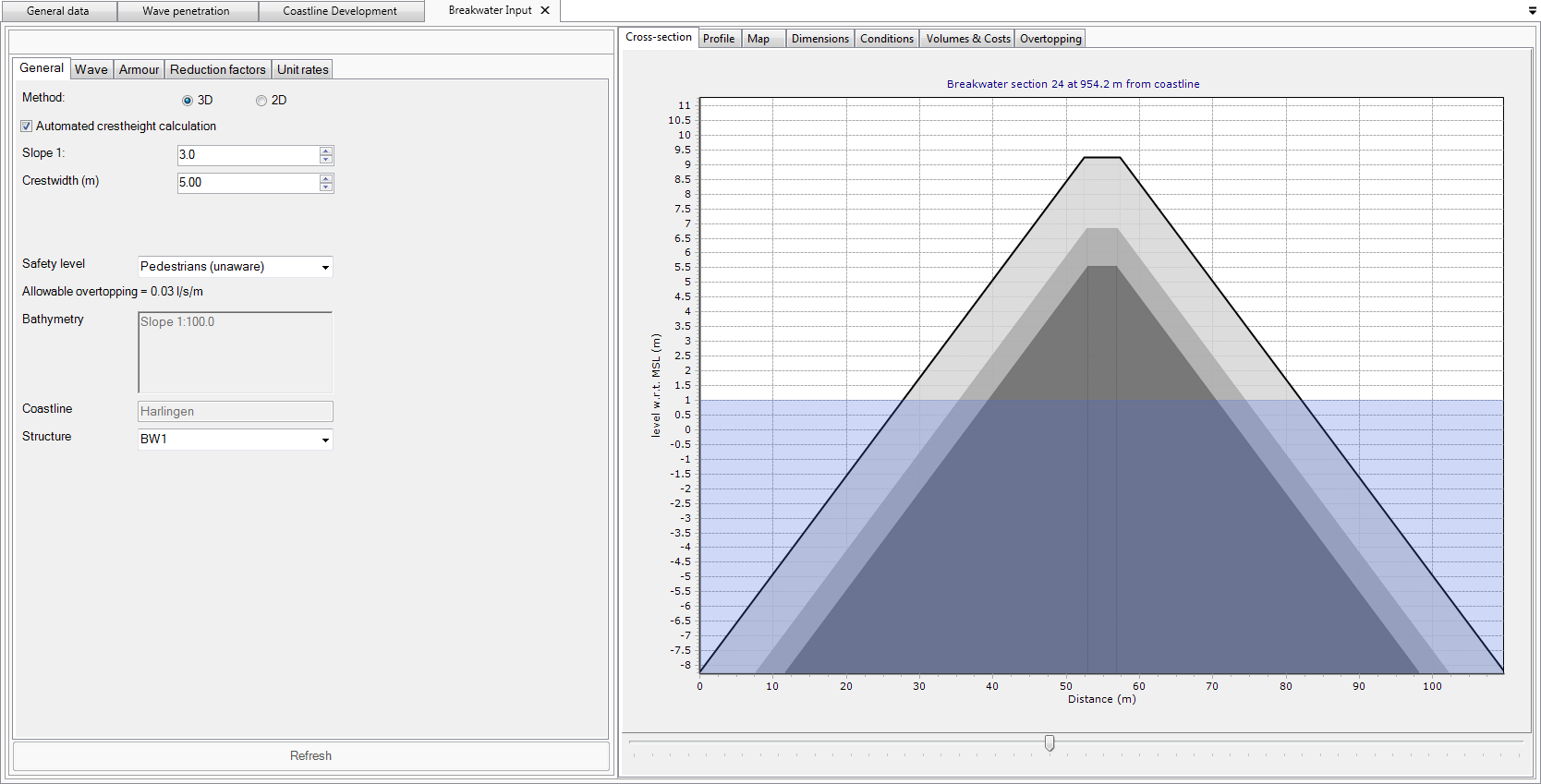...
The objectives of JIP CoDeS 1.0, following the developments made within the JIP CoDeS Pilot, are defined as follows:
- to extend the CoDeS tools within the tools framework within Delta Shell framework in terms of functionality, uniformity, interactivity and number of additional tools available
- to continue the joint creation of an easily accessible platform for the exchange and dissemination of CoDeS tools and knowledge
- to further grow the active community of developers (and users) amongst the different partners
- to build a showcase (case study) to interest potential future partners and clients, while showcasing all CoDeS 1.0 capabilities
...
A team of coastal engineers, programmers and managers (product owners) from the three JIP partners work together on tool development in sprint sessions following a SCRUM alike methodology, following the positive feedback on such methodology from the CoDeS pilot. Each sprint session has a clear scope and clear roles and responsibilities for the team. During the sprint sessions engineers and programmers use scripting (Iron Python and C#) to program CoDeS tools and link them to the Delta Shell user interface to make them easily accessible to the user community. In addition to the first (pilot) stage, a generic data module is added to the CoDeS framework, in order to support uniformity, integration and interactivity throughout the different CoDeS tools. Furthermore, first steps have been made to add testes tests to the CoDeS framework to validate the functioning of the tools and secure robustness when more tools are added to the framework in the future.
...
JIP CoDeS 1.0 is subdivided into three sets of sprint sessions. All these sprint sessions were concluded by a demo of the developed product to the advisory board (AB) for feedback and steering in priorities for subsequent developments. The scope of the sprint sessions was as follows:
- Prototype developments of new/existing tools (basic functionality only)
- Improvements of tools based on AB feedback and integration of tools using shared data model
- Finalization: save/load functionality, testing, bug fixing, show case and delivery delivery
Results
Products
Compared to the JIP CoDeS pilot the CoDeS tools framework was extended with following tools and functionality (Figure 2, objective 1):
- Generic data module to arrange the data handling for the different CoDeS tools, including:
- bathymetry definition
- coastline definition
- coastal structures (i.e. breakwaters)
- wave data import, classification and transformation
- tidal data import and classification
- Tool for the design, optimization and cost quantification of port breakwaters
- Tool for wave penetration (short crested) within a port basin
- Tool for coastline evolution due to alongshore sediment transport gradients and transport blockage by port breakwaters
- Tool for flow field prediction in and around port basin (excluded from final version as decided upon by AB)
- Save/load functionality
...
The embargo on the product was lifted in June July 2017. The python code of the tools can be freely downloaded form the OpenEarth repository. You can sign up for OpenEarth on the Deltares open source website. To use the tools in conjunction with the GUI, you need to acquire Delta Shell. To this end, you can either purchase a service package of the Delft3D Flexible Mesh suite or apply for a free version of Delta Shell without support. To link the tools to the Delta Shell GUI please read the readmeRead-Me document.
Process
Working together in sprints using a SCRUM alike methodology was found to provide a very productive, constructive and pleasant working experience during both the CoDeS pilot and CoDeS 1.0 projectprojects. Furthermore, the threshold for new developers to start-up and join the team is found to be fairly low (~couple of days). In order to streamline CoDeS software development in a professional manner, the software development tool JIRA was introduced in order to manage and structure the development process. Still the technical documentation and testing of the tools should be further professionalized to guarantee a robust framework that will stimulate the use in practice even further.
Way forward
| Status | ||||
|---|---|---|---|---|
|
This will most likely be part of the scope of a follow-up TKI project (CoDeS 2.0).
Way forward
All partners are enthusiastic about the progress being made and product being delivered and wish to continue the cooperation. This led to the initiation of a follow-up TKI project: JIP CoDeS 2.0. The exact scope of this project is still under discussion, but it will most likely include a connection to global databases (e.g. for tides, waves, bathymetries and shorelines), improved data management and a stronger focus on interdisciplinarity by the inclusion of tools related to ecology. Other parties Parties that are interested to use the tools or participate in future cooperation and development can contact Mr. Wiebe de Boer (wiebe.deboer@deltares.nl) or or Mr. Freek Scheel (freek.scheel@deltares.nl).
Figure 32: Overview of the developed CoDeS tools during developed in JIP CoDeS 1.0: general data module (upper left), breakwater design module (upper right), coastline evolution (lower left) and flow fields around in and around the port (lower right).



